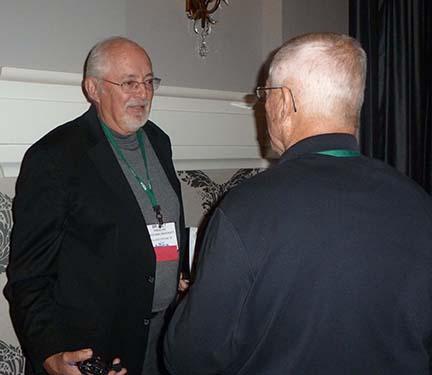 Milt Engelke, Ph.D., knows a thing or two about plant genetics. A professor emeritus and plant geneticist at Texas A&M, Engelke is the Godfather of zoysiagrass research, having developed several species, including Diamond and Palisades.
Milt Engelke, Ph.D., knows a thing or two about plant genetics. A professor emeritus and plant geneticist at Texas A&M, Engelke is the Godfather of zoysiagrass research, having developed several species, including Diamond and Palisades.
Through his career researching turfgrasses that help turf managers reduce inputs, Engelke also has developed a passion for sustainability.
"Water shortages and salinity are things that we are facing in our industry that are going to be absolutely devastating," Engelke said during a presentation the Turf and Ornamental Communicators Association annual meeting in Portland, Ore.
"We're starting to see it, and we're going to see a whole lot more of it."
Two years ago, Engelke relocated from Dallas to Oregon. Although parts of the state's western corridor receive 60 inches or more of rain per year, rainfall in the Portland area is 8 inches below the historic average, according to the National Weather Service. And some areas of the state, Engelke said, rainfall is off by as much as 14 inches.
"We're in the middle of the rainy season, and we're 14 inches off ourselves, and the snow pack is way off," Engelke said.
"We're going to find ourselves in a drought that the Midwest had last year. And we're not so sure that the Midwest is not going to have that drought again."
Such conditions, Engelke said, are why it is more important than ever to select turfgrass varieties that are best adapted for a specific environment.
In other words, if shade is an issue, choose turf that is bred for shade tolerance. If drought and water restrictions are a concern, choose a variety developed for drought tolerance.
When considering factors such as temperature, moisture and light exposure, Engelke said it is equally important to weigh the extremes of these factors and the duration of these extremes, many of which are affected by shifting climate patterns.
Engelke noted that early in his career the fad in Texas was to install creeping bentgrass putting greens. During the past several years, most of those surfaces have been replaced by one of several warm-season grasses. And that demarcation line is moving farther northward.
"Being green isn't a St. Patrick's Day event," Engelke said. "It's something that is very, very important."
More than 5,000 turfgrass varieties have been developed since the Plant Variety Protection Act was enacted on Dec. 24, 1970 to protect crop species, including turfgrass as intellectual property. With so many varieties bred for specific conditions, Engelke recommends that turf managers examine the most recent NTEP trial results for turfgrass varieties for geographic and environmental adaptability.
"There are a lot of grasses out there that are marketed with a lot of BS," Engelke said.
"BBS is what I support, and BBS is backed by science.' And that's what we want, to make sure we're not promoting varieties based on BS. We want to make sure we have good science behind them."

